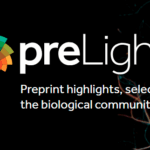1. It is a well known fact that you are in favor of open access to scientific information, particularly as far as the publication of the results of research in scientific journals is concerned. You were a proactive pioneer in the creation of SciELO and your active participation in the open access movement is testament to this. Where do you think open access is headed in the short term, particularly as far as “Gold Road” open access publishing is concerned?
I am of course in favour of the widest possible access to scientific information. Open access works very well for scientific journal articles. However there are other forms of scientific publications where the author has traditionally received payment for their work (Scientific manuals, university textbooks, some reviews etc.) or where it maybe necessary to maintain copyright in order to manage dissemination ( e.g. ensuring that only current recommendations for health interventions are available). Open access may not be the most appropriate form of copyright management for these works.
Although Open Access is an important mechanism for the dissemination of scientific information, there are many other important trends in scientific communication such as social networks, post-publication review, data archives, online collections of prepublished materials etc. which may have important impacts on this field. Beyond the question of access itself is the issue of how can the results of scientific research be used to add value and improve lives of individuals and populations.
2. The Finch Report has aroused controversy. What is your opinion of the report and the positive or negative effects it is having on developing or emerging countries ? Do you think that the road map envisioned for the report is applicable to developing or emerging countries?
The Finch Report represents a commitment by the British government towards open access for scientific information. Free access to scientific information is to be welcomed and can only bring benefits to people and scientists, in particular, wherever they live or work. Britain and several other high income countries have a substantial scientific publishing industry whose income is still mainly generated from traditional subscription revenues. One of the concerns of the Finch report was how to mitigate any adverse effects to the British publishing industry in the migration towards open access. In most developing countries, it is rare for subscription revenue to be the major form of income for journals and the scientific publishing industry is marginal or non-exisistent in the economy. It is therefore much easier for these countries to proceed with open access policies.
3. What use do you think SciELO can make of The Finch Report?
In most of the countries where SciELO operates, scientific journals are mainly financed by public funding either directly or indirectly (e.g. via research funding agencies, publically funded academic libraries and academic c institutitions). It is therefore much easier for journals to become open access without worrying about the need for charging author side payments. This makes it easier for SciELO to operate journals as open access in these countries.
4. You will participate in the SciELO 15 Years Conference as a member of the panel discussion on Trends and Innovations in Scholarly Communication. In your capacity as Editor of the Bulletin of the World Health Organization, what is your vision for the future of scientific journals? What will be the predominant trends in the near future?
With the advent of electronic online publishing, software platforms to manage journals and open access charges, it has become easier, low cost and low risk to launch new journals. This has resulted in the creation of thousands of new journals in recent years, many of dubious quality. This situation is not sustainable. Readers will give less weight to journal titles and increasingly search for articles in on-line repositories and judge their quality using article level metrics. Only the strongest of journal brands will survive, those which give value to readers as well as authors.
5. Your conference presentation will deal with Megajournals which seem to be establishing themselves as an option for scholarly communication, particularly when the success of PLoS One is considered. Do you believe we will have more high impact Megajournals in the near future? Do Megajournals offer a solution with a potential to be more widely disseminated?
The main attraction to publishers of megajournals is basically commercial, to maximise the number of articles published and therefore income to the publisher through the associated (APCs) article publishing charges recieved. In this we can currently divide megajournals into PloS One and the rest. PloS One has been phenomenally sucessful.It is today the largest journal by far with over 23000 articles published in 2012. No other megajournal comes close, the nearest are BMJ open and Nature’s Scientific reports with about 1000 articles each. The other so called megajournals currently do not really justify their name although some have only been recently been launched and may report better figures this year. It will however be very difficult for other journals to compete by offering a similar product. Perhaps journals such as PeerJ with a different business model may have more success.
6. Do you feel that the right conditions exist in developing or emerging countries for the creation and publication of Megajournals? Don’t you think that the fact that SciELO aggregates journals into collections with common methodologies and technologies fulfills the same function?
Megajournals in general work best where either a publisher has a journal with a strong brand and therefore can steer articles rejected by that journal towards the Megajournal for consideration or the publisher has many journals and has and therefore a regular pool of rejected articles. Cascading journals may be a better term for these types of journal offerings.These conditions in general do not exist in developing countries. Most journals in developing countries struggle to find acceptable articles to publish and therefore I do not think megajournals will be sucessful in these countries. The model of many subject specific journals produced by one publisher such as e Biomed Central may be a better model for developing countries. The most sucessful publisher from a developing country is Hindawi based in Egypt . In 2012 it published about 500 journals and 22,000 articles (almost as many as PLoS One) with revenues of 13million USD and a profit margin estimated at 52% (better then Elsevier). SciELO although not a journal publisher in the traditional sense is also a sucessful example of a multijournal platform in a developing country.
7. In addition to your role as Editor of the Bulletin of the World Health Organization, your various responsibilities in the Department of Knowledge Management and Sharing include that of Special Coordinator for the Promotion of Multilingualism. Has the promotion of multilingualism achieved positive results and what are the barriers that must be faced?
International organization such as the World Health Organization have a duty to make the information they produce widely available in multiple languages. Among the ways WHO achieves this is through a fully multilingual web-site with thousands of pages of health information available in each of the six official languages of the United Nations: Arabic, Chinese, English, French, Russian and Spanish. WHO also has an Institutional Repository (IRIS) where WHO publications in all languages can be searched and accessed through a multlingual interface. Nearly all WHO staff are multilingual and recognize the importance of multilingual communication and are supportive of efforts to promote multilingualism. We have developed a database for internal use were staff languages skills are registered (more than one hundred languages spoken) and can be made available for use by programs. We have an extensive translation program with external partners (publishers, academic and governmental instituitions, NGOs) who publish each year about 200 WHO publications in over 40 languages.
In addition we have the ePortuguese program which links together the 8 portuguese speaking member states and shares health information among them. I would also like to mention the Bulletin of the World Health Organization which besides being published each month in six different formats also publishes the abstracts of all its articles in six languages. The main barrier is of course financial, with more resources we could publish more information in more languages. In this respect we recently received a large donation from the Russian Federation to improve the quantity and quality of WHO information products in Russian.
8. English is recognized as the lingua franca of scholarly communication. The SciELO Program has adopted a multilingual approach, given that communication in national languages other than English is considered to be an essential requirement for the sharing of the results of scientific research. Speaking as a specialist in multilingualism, what is your assessment of the policy adopted by SciELO and of the efforts that are currently being carried out ? And more specifically, what in your opinion should be published exclusively in Portuguese and English and simultaneously in both languages?
The increase in the quality and availabilty of computer assisted translation tools, such as Google translate, has completely changed the ability of researchers to access information in foreign languages in recent years. Despite the known limitation of these tools and the translation mistakes that frequently occur, the principal results, data and conclusion of articles in foreign languages can often be determined. Nevertheless, English continues to be the ligua franca for international communication of scientific research and journals which have as their objective to publish this kind of research need to publish their articles in English or at a minimum the abstracts. This does not preclude journals publishing research in other languages for national or regional audiences. In this respect one has to note the large scientific communities that communicate in Chinese and Spanish. The language of the publication should be chosen based on the target audience to be reached. For example health professionals or policy makers often only speak the national language and therefore communication directed to these audiences should be in the language they understand.
9. The SciELO Program is in the process of developing action lines which are directed towards the professionalization and internationalization of the management and operation of periodicals with the objective of improving the quality of publications according to international standards, as well as increasing both their visibility and international impact. On the basis of your experience as the editor of two high impact international journals – The Memórias do Instituto Oswaldo Cruz and the Bulletin of the World Health Organization – what are the major challenges which must be overcome?
The SciELO program has made an outstanding contribution to the improvement of scientific journals in Latin America. SciELO has often been at the forefront in the introduction of innovation in journal publishing even from an international perspective. Publishing technology is constantly evolving and the best journals and publishers are continuously adding new features to their offerings. Therefore SciELO can never rest and must continuously be improving. By providing a single standard platform for journals throughout Latin America and other countries it offers the best option for the journals of these countries not to be left behind by technological change.
[Reviewed on 01 August 2013]
Como citar este post [ISO 690/2010]:







![It takes a body to understand the world – why ChatGPT and other language AIs don’t know what they’re saying [Originally published in The Conversation in April/2023] Photograph of a white and silver robot holding a tablet in front of a luggage store. In the background, in the hallway, two people are walking with their backs to the camera.](https://blog.scielo.org/en/wp-content/uploads/sites/2/2023/04/lukas-hND1OG3q67k-unsplash_thumb.jpg)








Recent Comments